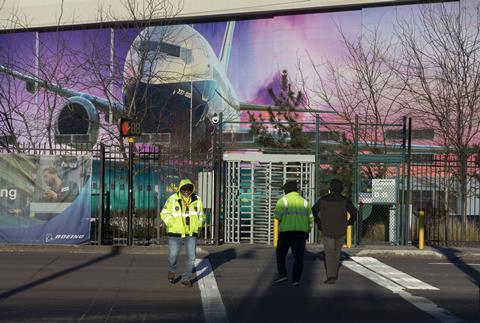The principles of lean manufacturing perfected by automotive giant Toyota have several essential elements: continuous improvement, respect, teamwork, communication, and developing your people and partners. Allied to this is the concept of Jidoka: to quickly identify and correct issues.
Under this system, there is a mechanism that any employee can use if they spot something wrong, to stop production until the problem is fixed, and address underlying causes to prevent a recurrence.
How Boeing could use a little Jidoka right now, as its incoming management team tries to mend a wayward production system.

Everybody acknowledges that Boeing is in crisis, but some popular opinions as to the causes need scrutiny. The departure from being an engineering-led organisation to one overly focussed on maximising shareholder returns and quarterly financial results is a top theory.
But putting the accountants in charge does not have to end in disaster. After all, in its Jack Welch heyday, GE pioneered this focus on quarterly performance – yet GE Aerospace has not suffered the same sorts of safety, quality and inspection escapes that Boeing has.
There’s another argument that says once McDonnell Douglas had been integrated, Boeing started acting as though it was too big to fail; it was too important to the US economy – or even the global economy – to be allowed to collapse. Mistakes could be made and someone else would always have to pick up the pieces.
Boeing’s current quality issues are not new and appear to be self-inflicted. Prior to 2019, the airframer was implementing its ‘QA Transformation Plan’. Ernesto Gonzalez-Beltran, then vice-president of quality was the poster boy (and subsequent public fall guy) of a strategy that included reducing the number of quality inspectors in Washington State by almost one-third. Gonzalez-Beltran was formerly at Toyota and would have known the importance of Jidoka to its success.
The entire ‘QA Transformation Plan’ was scrapped after quality problems – who knew? – emerged on the 787, but it may have introduced norms, such as performing remedial action without any records being made, that contributed directly to the Alaska Airlines door-plug blow-out in January. There are numerous reports of quality problems that were not documented and subsequently fixed on the fly.
According to Boeing, the latest Federal Aviation Administration audit primarily identified failings where staff were not following defined processes and procedures. This is likely due to time pressure and/or incentives (or threats) to keep aircraft moving down the line. Either way, Boeing apparently does not like receiving bad news – targeting the messenger, not the message.
In the end, the combination of regulatory scrutiny and customer pressure – from Southwest Airlines and United Airlines, for instance – caused Boeing to blink. Chief executive David Calhoun will depart at the end of year, while Boeing Commercial Airplanes chief Stan Deal retires immediately, to be replaced by Stephanie Pope, currently chief operating officer of Boeing as a whole, who has a strong finance background.
Although leadership change is now under way that, by itself, is not enough. Rebuilding trust and openness requires deep changes in entrenched culture, incentives and power structures, ideally backed by an explicit roadmap for institutional and organisational change. If results do not improve, an activist investor may feel obliged to step in.
Being an engineering-led business does not mean the chief executive has to be an engineer – after all, Boeing has only been led by someone with an engineering background for less than half its history.
But what matters is that engineers are listened to, trusted and have retribution-free ways to provide feedback as issues emerge. Maybe it is time for Boeing to make a proper attempt at mastering Jidoka.
Hal Calamvokis is an aviation professional with experience in strategy, finance and leasing, sustainability, airline management and aircraft certification.


























